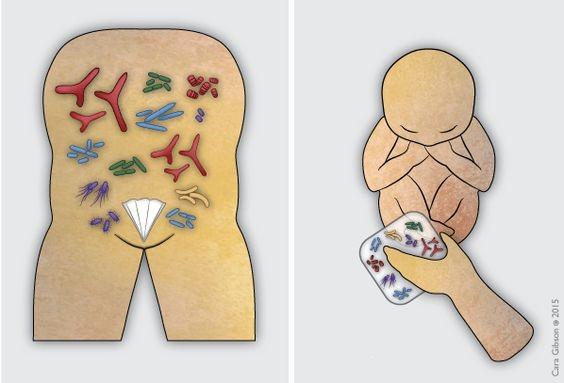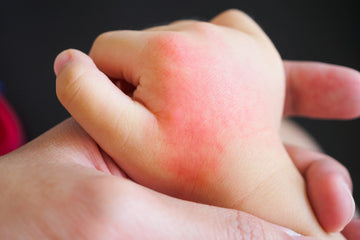C-Sections and Vaginal Seeding

Science has found a way for C-section mothers to pass their good bacteria (typically found in the birth canal) to their baby. It has been labeled Vaginal Seeding.
While it is still controversial, many doctors and midwives are happy with the research and chances to provide these bacteria to babies who otherwise would not be exposed to it.
C-sections occur in more than 1/3rd of births in the US. Current research shows that babies born via cesarean birth are at increased risk of:
- obesity
- asthma
- celiac disease
- autism
- chronic illnesses
- type 1 diabetes (later in their lives)
The research suggests that it is the differences in the bacteria of the gut that plays a part in the rise of these diseases. Vaginally born babies have a better gut bacteria than C-section babies.
You know the importance of gut health during pregnancy, so ensuring exposure to the mother's bacteria during birth seems to make sense.
A mother's bacteria are absorbed through the baby’s skin, eyes, nose, mouth, genitals, etc as he or she passes through the birth canal during a vaginal birth. Vaginal seeding is, in simple form, when the mother's bacteria is wiped over these areas of a baby born by c-section.
What is Vaginal Seeding?
Dr. Maria Gloria Dominguez-Bello, an associate professor in the Human Microbiome Program at the NYU School of Medicine, presented the process to do what is called an inoculum or “seeding” for the infant.- Take a piece of gauze soaked in sterile normal saline
- Fold it up like a tampon with lots of surface area and insert into the mother’s vagina
- Leave for 1 hour, remove just prior to surgery and keep in a sterile container
- Immediately after birth apply the swab to the baby’s mouth, face, then the rest of the body
The latest scientific research is now showing that if the baby is not properly seeded with the mother's own bacteria at birth, then the baby's microbiome, is left "incomplete". Consequently, that baby's immune system may not develop to its full potential.
How to Help After Birth
After birth, the bacteria continues to grow through contact with the mother and breastfeeding. Try to ensure the following:- Hold baby skin to skin and kiss your baby
- Make sure that you hold baby immediately after birth - in the operating room
- Breastfeed
- Practice skin-to-skin
- Avoid bathing your baby for at least 24 hours after birth, and then only use plain water for at least 4 weeks.
- Bring blankets from home to use on baby at the hospital
- Minimize the handling of baby by non-family members during the first few weeks – particularly skin to skin contact.
- Avoid giving baby unnecessary antibiotics. Again, if antibiotics are required probiotics need to be considered.
- Probiotics may also be beneficial for babies suffering from colic.
source
source
source
source
source
source
source










